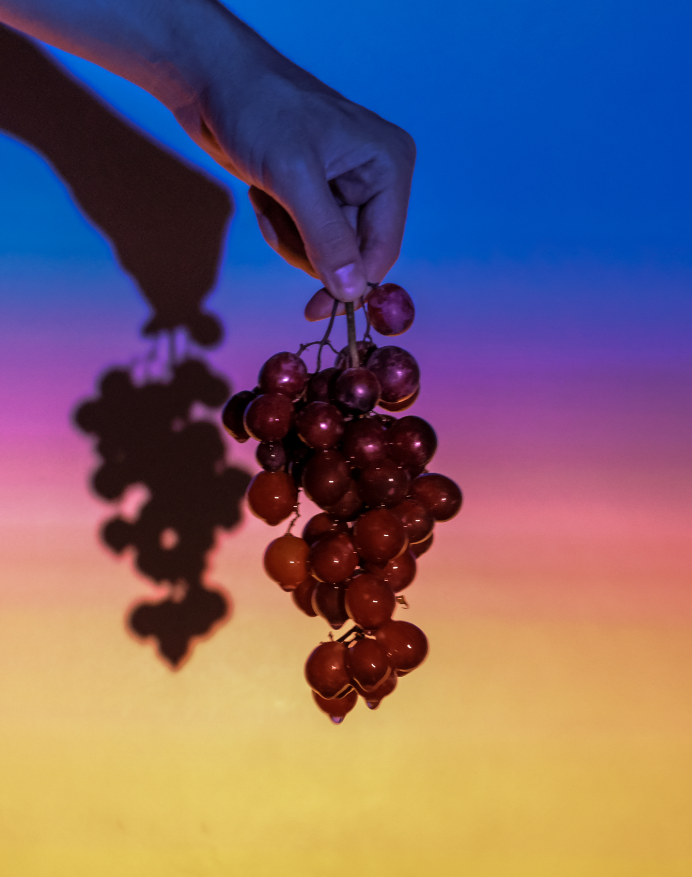
I used the grape vine as a sculpture of the geographic story about how climate change has affected wine. I tried to incorporate three senses (taste, touch, sight) to capture more of the data.
Taste: I poked holes in the grapes on the bottom of the vine and soaked the grapes in a sugary solution for a couple of hours. After this, the grapes on the bottom were significantly sweeter (disgustingly so) than the non-soaked grapes at the top.
Touch: because of the high concentration of the sugary solution, the grapes at the bottom were much softer and felt wilted. This fit in with the concept that grapes are ripening faster on the vine and going bad in the heat. In addition, the grapes were sticky and really unpleasant to the touch.
Sight: I wanted to communicate how heat was changing the taste of the grapes, so I created a gradient of hot to cold (orange to blue).
In the end, the grapes near the top were more desirable, showing that wine growing regions are moving north.
